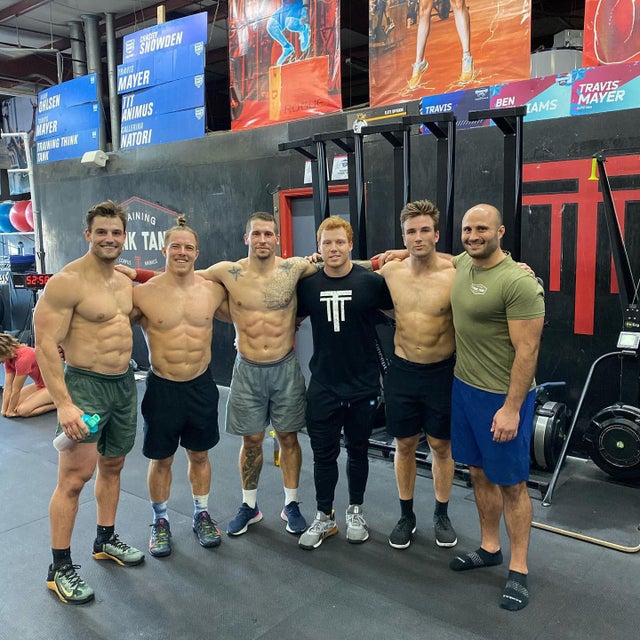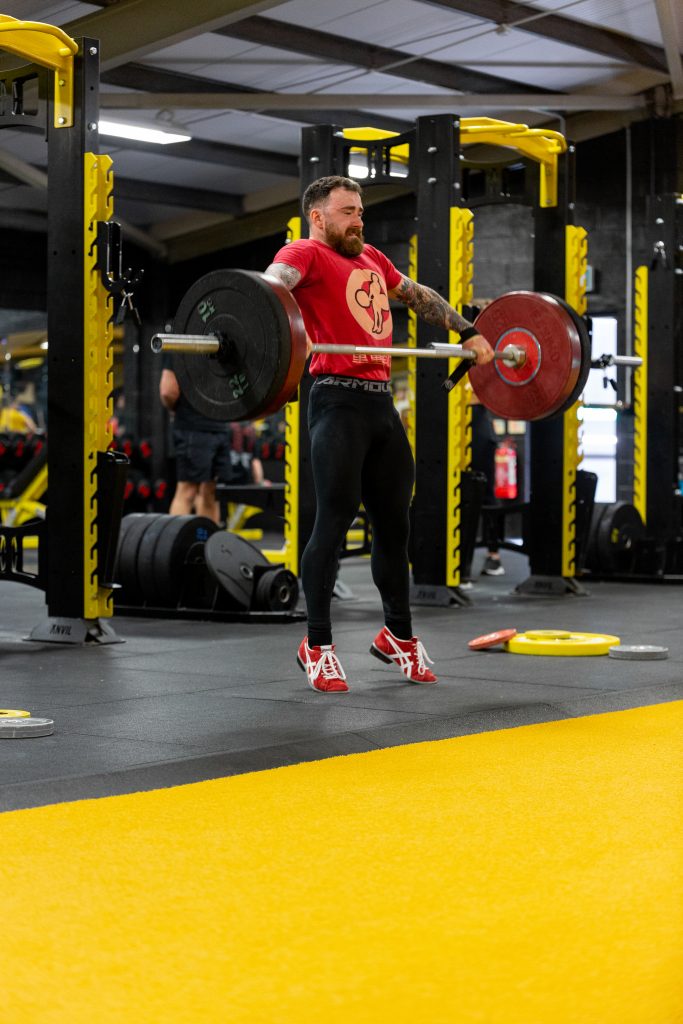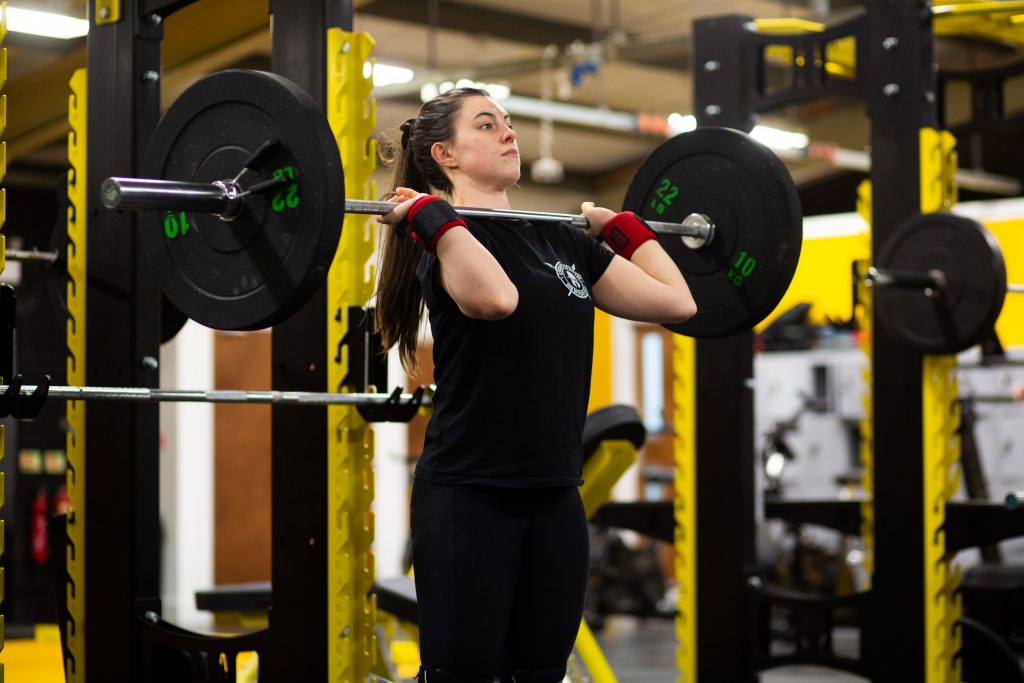High Rep Weight Training (and why it’s great for building muscle)
High rep weight training suffers a bad rap in muscle building circles. We automatically assume that hypertrophy comes from heavier weights, but I believe there’s a rock solid case for adding high rep weight training into your programmes. I’m not saying it should replace tried and tested approaches, but it at least warrants some investigation – could it be the hypertrophy boost we’re missing out on? I believe so.
In this article we’re going to look at some of the evidence base behind my claims and give you ideas of how to adjust your training to add the additional reps into your programming.
My interest in the concept of higher rep training came from a number of sources that built up over time. The first one was the ’empty bar challenge’ that used to do the rounds in my old gym. Basically the guys would pick an exercise and see how many reps they could perform with an empty 20kg bar – squats, bench presses, should presses, curls, lunges etc. They’d do these challenges regularly (every week) and were jacked. Watching a big dude screaming his way through the final few reps of bench press with an empty bar was a funny sight!
The next one was from CrossFit. These guys aren’t bodybuilders, but they’re super athletic. They hit high rep workout after high rep workout. They train with massive volume, but you cant do huge volume with heavy weights – it’s just not possible, even for those guys. There’s also a lot of cardio performed by the CrossFit athletes, but look at those guys and tell me they aren’t carrying more muscle than the average weight training enthusiast…

It doesn’t take long to start joining the dots. You realise that the bro science about only big weights build muscle is wrong. The obvious assumption is that it’s ‘all steroids’, which is an accusation that I hate. For some people, it’s a go-to explanation for a person carrying muscle, disregarding completely the hard work, eating and sacrifice that goes into building a muscular, athletic athletic physique.
High rep weight training – the support
There’s too much evidence that lighter weight, high rep workouts build muscle too. Anecdotally it’s obvious, but the question is what does the science say? Do the labs back up the hypothesis that high repetition workouts are capable of building muscle too?
Before we answer the question, we have to define ‘high rep’ workouts. There’s a lot of research that goes into strength and hypertrophy training, which is then subsequently over-complicated by personal trainers and fitness bloggers with an ego! Essentially, you can distill rep ranges and target outcomes into the following broad groups…
Most people will break down a rep range into the following…
- 1-5 reps: Strength and power
- 6-12 reps: Hypertrophy
- 12+ reps: Muscular endurance
So what we’re going to look at is the effects of higher rep workouts (12+ reps per set) on hypertrophy. We’re going to look at the evidence in support of employing higher repetitions as part of an overall workout programme and see if there are any unexpected benefits of high repetition work.
If we discover that there are benefits, we’ll look at how to programme these kinds of workouts to make the most from them.
Does high rep weight training improve strength and power?
The answer here (surprisingly) is an unequivocal YES. I had no idea about this – in all honesty I would have bet the farm against this outcome, but time and again the research shows that yes, high rep weight training work helps to improve strength and power.
Not only does the research consistently show that high rep weight training builds strength and power, but it also shows that it helps to improve them across a number of different domains. There’s a lot of complex reasons as to why strength and power are improved (certainly from a neuromuscular standpoint), so it’d be remiss to suggest that high rep weight training alone is responsible for it, but what it does mean is that there’s a legitimate place for high rep weight training in a strength and power improvement training plan.
In fact, in a 2017 study on power output development, the researchers concluded that performing low weight, high speed repetitions were actually more effective for developing power than heavier weights, both because the bar moved faster (velocity is linked to power) and because there was less fatigue from the workouts. Reduced fatigue allows athletes to train harder, more frequently and that leads to strength and power improvements happening quicker. It also reduces injury risk. Velocity based training plays a crucial role in optimizing power development.

A different study showed how low loads can be very effective for developing strength. Researchers performed a meta-analysis from 2017 on different circuit-based (high rep, short rest) protocols and concluded that… ‘For large effects in one-repetition maximum bench press, the data indicate that intensity should be ~30-60% one-repetition maximum, with sessions lasting at least ~22.5-60 min.‘
It’s important to point out though that this information was also linked to training history – in subjects who were newer to training, the effects were more pronounced, suggesting the higher reps were more effective for beginners.
I don’t want to labour the point too much, so I’ll use one more study to highlight the support high rep weight training has in performance…
In research from 1999, subjects were divided into 4 groups – Groups I, II, and III completed 3 workouts per week, including a warm-up and 4 sets of squats for a 3–5 repetitions maximum (3–5RM), 13–15RM, or 23– 25RM, respectively. A fourth (control) group did not participate in formal physical training during this interim. There appeared to be no significant difference between 3 and 25 rep workouts for changes in either vertical jump distance, knee extension and flexion peak torque at 300?·s?1, or knee flexion peak torque at 60?·s?1.
The suggestion here then is that it’s absolutely possible to improve strength, power and athletic performance with high rep weight training, as long as you abide by the protocols set out by the research. Simply lifting light weights for high repetitions isn’t enough – you’ll have adjust intensity by working at higher speeds, increasing set lengths and reducing rest periods.
Do different muscle fibre types influence the effectiveness of the approach?
The next question that I had was whether or not muscle fibre type was influential in the success of high rep weight training?
It stands to reason that if slow twitch muscle fibres benefit more from higher rep work, a more thorough hypertrophy programme would include high rep work so as to not miss out these fibre types. What I learned from the research is that there is a place for rep ranges across the spectrum.
A 2014 study into the role of fibre types in muscle hypertrophy highlighted that there is a definite role for slow twitch fibres to play. The researchers concluded that previous work had underestimated the growth potential of type 1 fibres and that with correct training, they too could contribute significantly to overall cross sectional area of muscle. Essentially the conclusion is that low load works for hypertrophy because it targets type 1 fibres. However, it has to be performed to failure.
Further research backs up this conclusion about low load training needing to be performed to failure, so there’s a clear pattern that has been emerging. If you’re going to lift light, you have to lift hard! That’s a pretty acceptable tradeoff for muscle gain, and would explain why the CrossFit athletes are still pretty jacked despite doing a lot of their training at high reps.

The other point to consider…
Resistance training doesn’t just impact the muscles – it also affects the connective tissues as well. In the early days of any resistance training programme, especially at heavier loads or when you’re learning new exercises, there’s a period of adaption for the connective tissues. Muscle tissue is elastic and adapts pretty quickly, but connective tissues such as ligaments and tendons have less of a blood supply and a different physiology, meaning they take longer to adapt.
One of the ways to help connective tissues ease into a new programme without risking injury is with lighter weights. The research around connective tissue adaption shows that the volume, intensity, and load-bearing nature of the exercise training are important factors in causing connective tissue adaptations. This is a big deal, because alongside giving the tissues time to adapt, you also reduce the risk of injury as you lift lighter loads in the early stages.
You don’t want to interrupt a new programme because you went too heavy, too quickly and ended up hurting yourself.
High rep weight training and muscle building – what’s sensible?
We’re beginning to build a picture as to how and why high rep weight training can be a great way to build muscle. It’s never going to replace the medium-high weight, medium-high volume approach, but it can certainly supplement it and provide you with a new and varied training stimulus. Performed effectively, it’s an excellent way to boost your hypertrophy training.
With that in mind, here’s the way to sensibly use high rep weight training to build muscle…
Train to failure
If you’re going to lift lighter loads, you have to do them a lot. The research is crystal clear on this one – you have to train to failure if you want to benefit from muscle growth by performing high rep weight training. Go light, but go hard – think about the guys I was telling you about in the opening section of the article. Empty bar, 100+ reps in many cases.
It’s a selective approach, so use it as so
High rep weight training is only useful for growing slow twitch muscle fibres – they can grow a lot more than previously thought, but it’s still a targeted approach. Use it Outside of your higher weight, lower weight work. It’ll have an effect on the muscle fibres your heavier days miss out. If you’re skinny, chances are you’ll have a higher percentage of slow twitch fibres, so perhaps use it more.
It’s helpful for connective tissue adaption
When you’re starting a new training programme, or you’re learning a new skill in the weights room (weightlifting movements such as the snatch and clean and jerk for example), then start light and go with the higher reps. It’s a good way to help ease the connective tissues into the process, so you reduce the risk of injury.
Use it for power development
Arguably the biggest surprise for low weight training for me was when the research revealed it can be used (very effectively) for power development. It does make sense though – speed is more important than load, plus the light weight high rep element is helpful for recovery. We’ve seen this time and again with plyometrics, so perhaps it shouldn’t have been as big of a surprise to me!
Programming volume effectively
We’ve been given the guidelines that make high rep weight training effective, so here’s a few pointers on making it successful…
Programme them separate to the heavy days – don’t just throw in a high rep set at the end of an exercise, spend a session on them. Give them the time, attention and effort that you need to make them worth their while.
Don’t limit to certain exercises or body parts. There used to be a school of thought that would ‘target’ muscles that people believed were slow twitch. We know now that that isn’t quite how it works, so that’s not a particularly good approach. All muscles have a variety of fibres types in them, so there’s value in training the entire body with rep ranges along the whole spectrum.
Perform lots of sets. Don’t confuse ‘light’ with ‘easy’. You should still be training very, very hard – you just lift lighter weights. You should be hitting failure, and hitting it on every set. If you treat your light days as your easy days, you’re getting it wrong. In terms of overall volume you should be looking at 5+ sets per exercise, with 15+ reps to failure with each one.
High rep weight training for muscle building – final thoughts
I started by asking the question could high rep weight training be used to build muscle, and the answer I found was yes, it can – as long as you use it correctly. It’s never going to replace the medium-high weight, higher volume approach to hypertrophy, but it’s a very useful addition to an overall muscle building programme. It catches those slow twitch muscle fibres that other hypertrophy programmes miss, plus it helps connective tissues adapt to the stresses of resistance training.
Use the advice in this article to add high rep weight training into your muscle building training and benefit from the boost in fitness and results.
